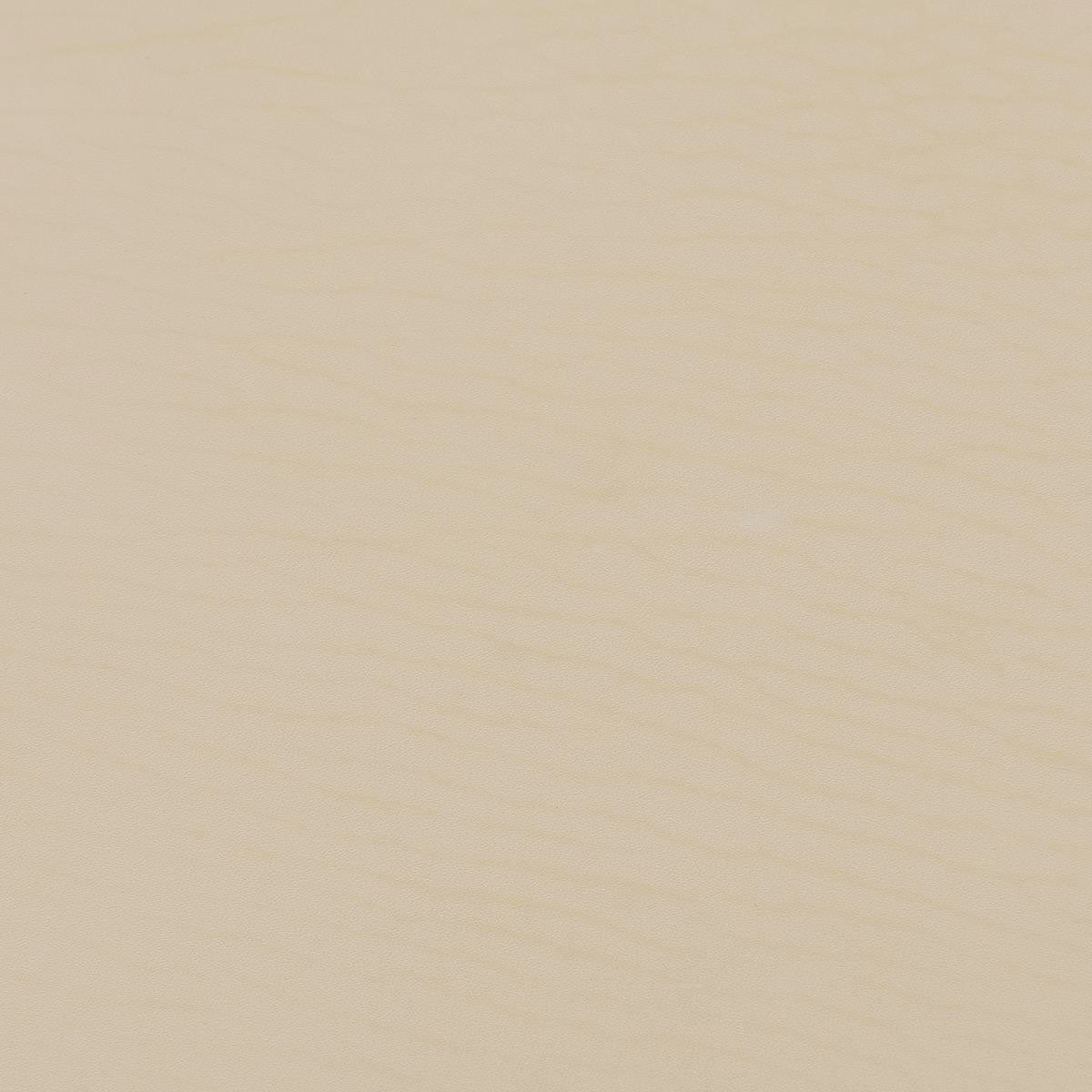THE NECESSARY EQUIPMENT
To complete this tutorial, you will need:
- 1 piece of CLASSIC natural vegetable tanned collar leather - 30 x 40 cm - Thickness 1.2mm
- 1 pot of oil dye - Fiebing's OIL DYE / PRO DYE - Fawn
- 1 box of waxed linen thread MeiSi super fine M50 - CARAMEL
- 1 jar of neatsfoot oil
- 1 jar of gum tragacanth or Tokonole
- 1 pot of water-based contact glue
- 1 brass scabbard "The essential"
- 1 square trim N°00 - Barry king tools
- 1 leather goods iron with guide 1.5 mm - Deco Leather
FRENCH VERSION
VERSION FRANCAISE
1. PRINT AND CUT THE PATTERN
Print the PDF pattern on A4 paper. Be careful to respect the original size of the document
Cut out the pattern and stick it on stiff paper or cardboard.
- Print PDF file on A4 paper, making sure your printer settings respect the original scale of the document (check Print Guide on the last page).
- Cut out paper template and glue the paper template to card stock.

2. TINTING THE VEGETABLE-TANNED LEATHER
Dye the vegetable tanned leather with a soft cloth. Here: FIEBING'S OIL DYE / PRO DYE - FAUVE - SADDLE TAN
Nourish and shine leather with neatsfoot oil.
SEE THE LEATHER DYEING GUIDE >
- Tint the vegetable tanned leather. Here: FIEBING'S Professional OIL DYE / PRO DYE - FAUVE - SADDLE TAN
- Nourish the leather with neatsfoot oil.
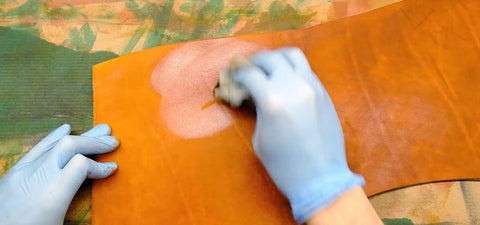 |
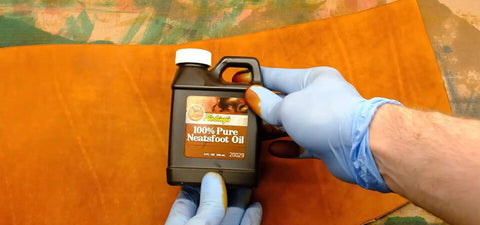 |
3. CUT THE LEATHER USING THE PATTERN
With the pieces cut out from the pattern, trace the elements on the leather. We advise you to use a silver pencil.
Cut the leather following your drawn lines
- Using cut-out template, scribe pattern onto the leather.
- Cut leather along your scribed lines.
 |
 |
4. WORK THE SLOTS THAT WILL NOT BE SEWNED
Prepare the slices with an edge trimmer then tint and burnish the edges (with gum tragacanth) that will not be sewn (the top of the Card Holder and the inside of the Front Face). If necessary, use light sandpaper to even out before burnishing.
Use leatherwork netting to add a decorative line to the prepared edges.
- Dress and burnish edges that will not be stitched - Card Panel and inside of Front Panel.
- Using edge creaser, add decorative crease lines along these edges.
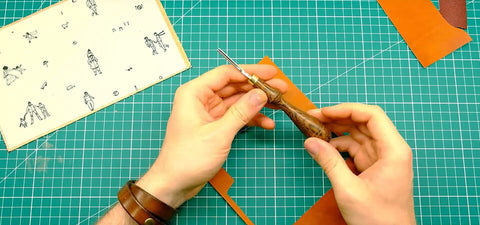 |
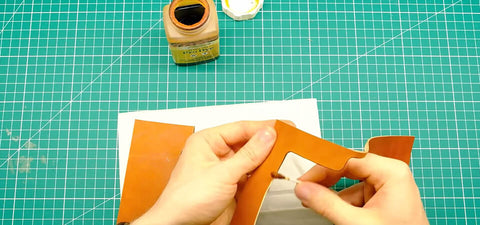 |
 |
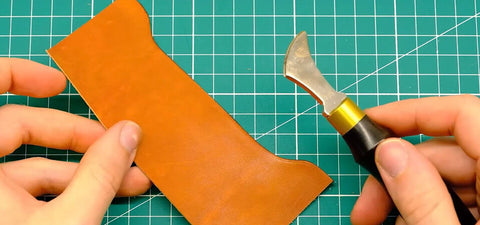 |
5. STICK THE CARD HOLDER ON THE FRONT FACE
Glue the card holder to the front side along the outside seam line indicated on the card holder.
- Glue the Card Panel to the Front Panel, along the stitch lines indicated on the sides of the Card Panel.
 |
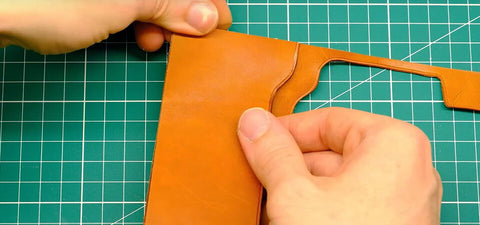 |
6. MAKE A SADDLE STITCH
Sew the card holder on the front side: seam line located in the middle and indicated on the pattern. James opted for a saddle stitch seam.
SEE THE SELLIER POINT SEWING GUIDE >
- Stitch down the middle part of the Card Panel onto the Front Panel using pricking irons or awl to make the holes.
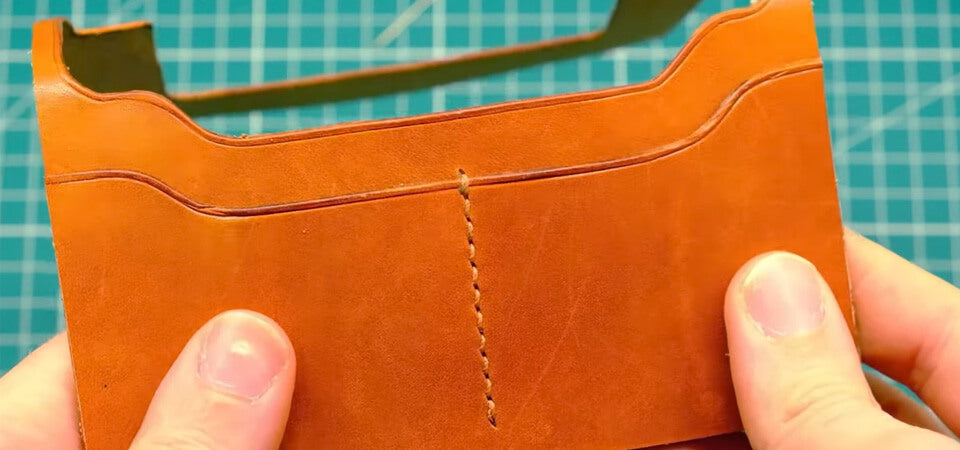
7. GLUE THE LINING ON THE BACK SIDE
If you wish to have a lining: stick it with water-based glue on the back side.
- If you want to have an inner coat: glue it with aquagum on the Back Panel.
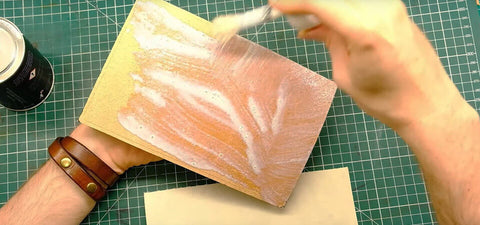 |
 |
8. GLUE THE FRONT FACE TO THE BACK FACE
Glue the front side and the back side then leave your project to rest until the glue is completely dry.
- Glue the Front Panel to the Back Panel and let your project sit for a couple of hours till the glue sets.

9. WORK THE SLICES
Make a thin cut all around your project to even out the glued edges - if necessary use sandpaper to even out.
Then work the slices with an edge trimmer then tint and burnish the edges (with gum tragacanth). If necessary, use light sandpaper to even out before burnishing.
- Clean the outer edges to be stitched by cutting a clean edge or sanding until all layers of leather are flush.
- Dress and burnish edges that will not be stitched - Card Panel and inside of Front Panel.
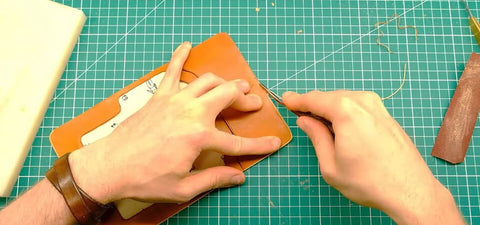 |
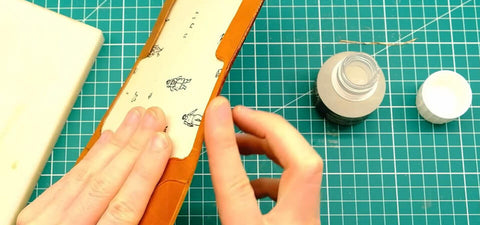 |
10. SEW THE PASSPORT HOLDER
Trace a seam line 3 mm from the edge all around your project then mark the points (marking wheel or stamping claw) and sew according to your usual technique. James opted for a saddle stitch seam.
- Mark your stitching line 3 mm from the edge, punch holes for stitching using picking irons or awl, and stitch.
 |
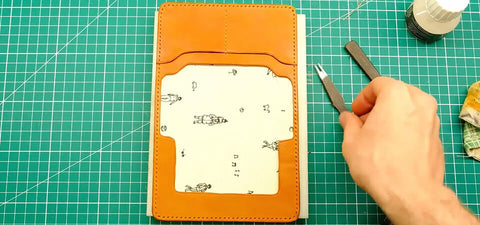 |

11. MAKE A DECORATIVE NET
Use leatherwork netting to add a decorative line to the prepared edges.
Then wax the slices by heating beeswax.
- Using edge creaser, add a decorative crease line along the edge.
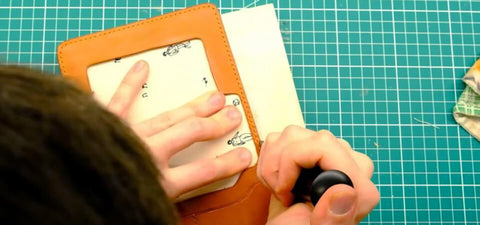 |
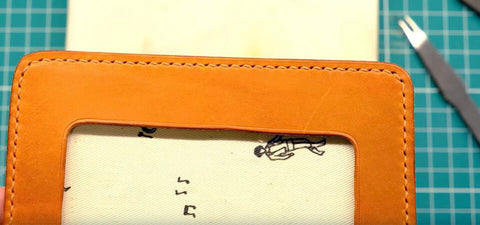 |
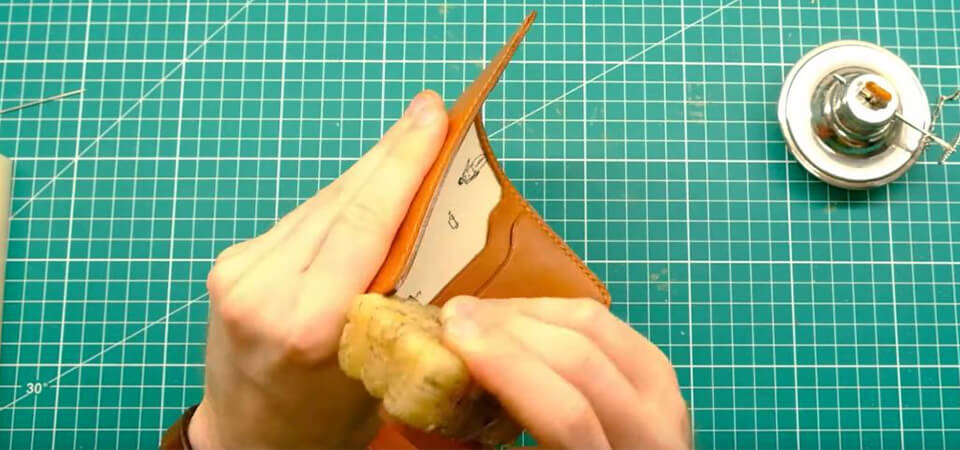
12. WAX AND PROTECT YOUR CREATION
Wax your creation to nourish and protect your leather.
- Polish your creation to nourish and protect your leather.
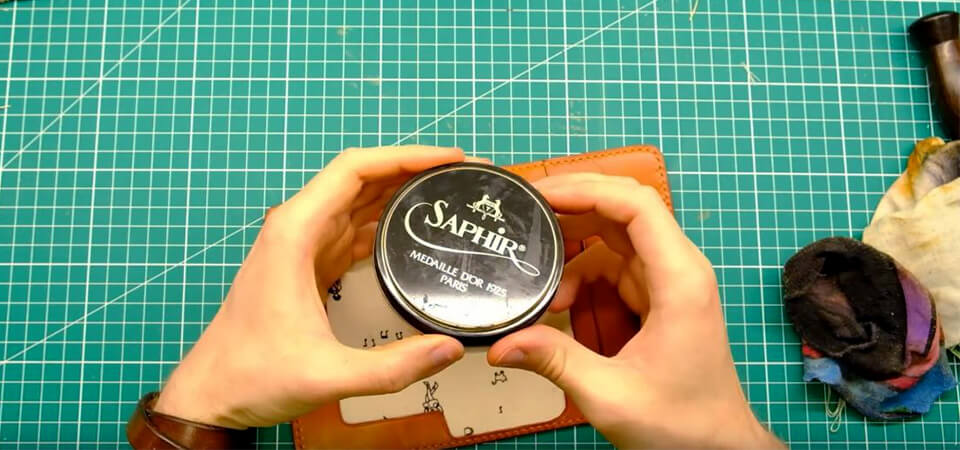
WHO IS JAMES BERRY?
James Berry is passionate about working with leather and especially working with vegetable tanned leather. Through his Youtube channel and his various tutorial videos he makes you discover new techniques.
James Berry is passionate about leatherwork and especially vegetable tanned leather. Through his Youtube channel and his various tutorial videos in English, he introduces you to new techniques.
ACCESS HER YOUTUBE CHANNEL >



